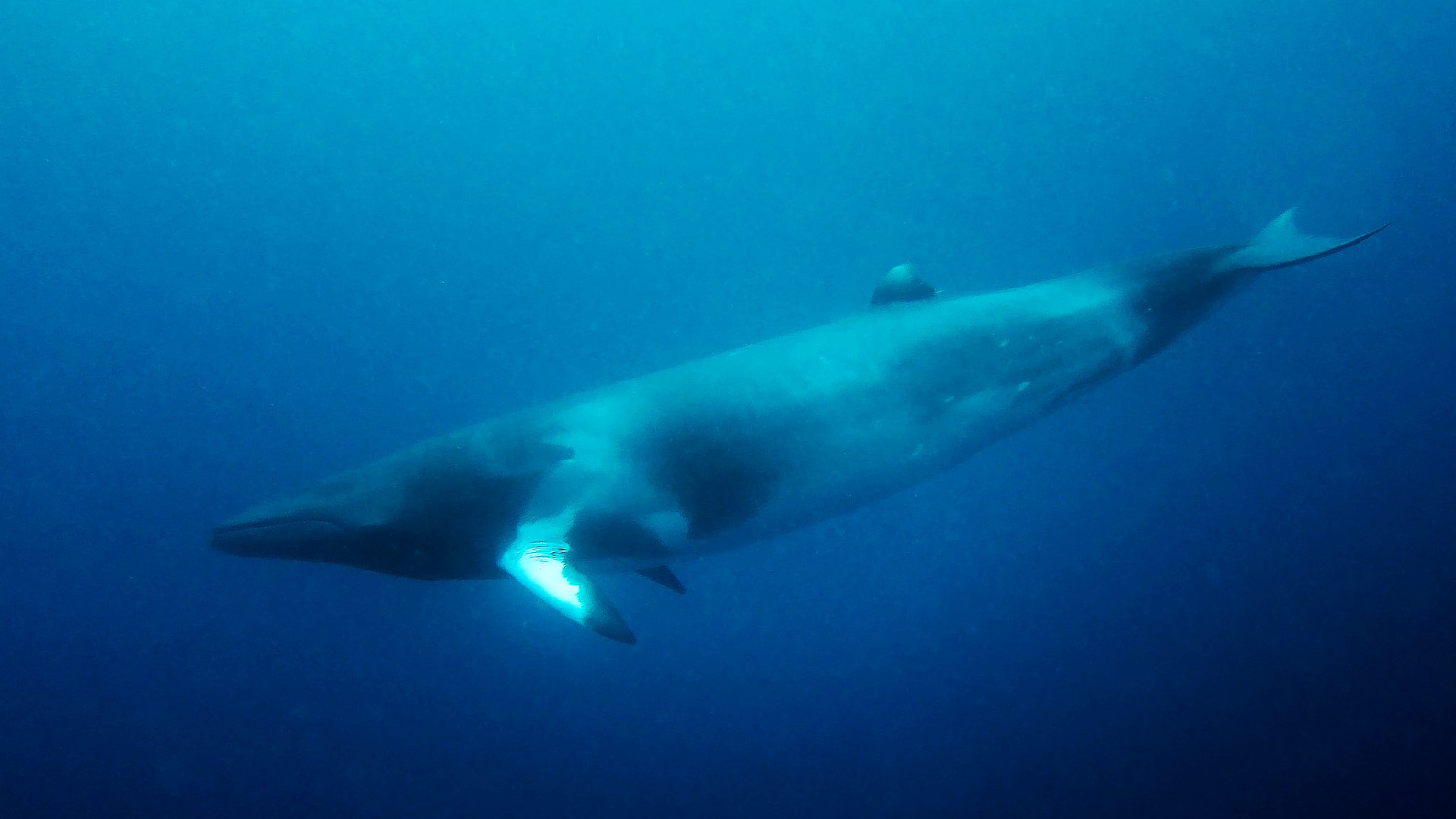Common minke whale
A species of Balaenoptera, Also known as Little piked whale, Least rorqual, Young finbacks, North atlantic minke whale Scientific name : Balaenoptera acutorostrata Genus : Balaenoptera
Common minke whale, A species of Balaenoptera
Also known as:
Little piked whale, Least rorqual, Young finbacks, North atlantic minke whale
Botanical name: Balaenoptera acutorostrata
Genus: Balaenoptera
Content
Description
 Photo By Kris Mikael Krister , used under CC-BY-3.0 /Cropped and compressed from original
Photo By Kris Mikael Krister , used under CC-BY-3.0 /Cropped and compressed from original Description
The common minke whale is the smallest of the rorquals, and one of the smallest baleen whales (second smallest only to the Pygmy right whale). In the North Atlantic, Norwegian whaling vessels in 1940 allegedly caught individuals of up to 10.7 m (35 ft) in length, but they were likely only measured visually in comparison to objects of known dimensions aboard the ships themselves – the longest caught in subsequent years were typically only up to 9.4–10.05 m (30.8–33.0 ft) in length. In the North Pacific, Soviet vessels operating out of the Kuril Islands claimed to have caught two males of 12.2 (40 ft) and 12 m (39 ft) and a female of 10.7 m (35 ft) – the first two were landed in 1951, the third in 1960. These likely represent undersized sei whales, part of the massive misreporting of whaling data by the Soviet Union in the North Pacific and elsewhere. The longest measured by Icelandic scientists were an 8.7 m (29 ft) male and a 9 m (30 ft) female, while the longest caught by the Japanese in the western North Pacific were 8.5 m (28 ft) males and a 9.1 m (30 ft) female – the latter caught off eastern Hokkaido in 1977. For the dwarf form, the longest reported are a 7.62 m (25.0 ft) male caught in May 1973 and a 7.77 (25.5 ft) female caught in May 1970, both taken off South Africa. Males caught in the western North Pacific and weighed whole on a truck scale averaged between 2.85 and 4.23 metric tons (3.14 and 4.66 short tons) (range: 0.86 to 6.36 metric tons, 0.95 to 7.01 short tons), while females averaged between 1.93 and 3.63 metric tons (2.13 and 4.00 short tons) (range: 0.84 to 8.35 metric tons, 0.93 to 9.20 short tons). At sexual maturity, males and females in the North Atlantic average between 6.16–6.75 m (20.2–22.1 ft) and 6.03–7.15 m (19.8–23.5 ft), while in the North Pacific they average between 6.3–6.8 m (21–22 ft) and 7.1–7.3 m (23–24 ft). At physical maturity, males and females in the North Atlantic average between 7.9–8.17 m (25.9–26.8 ft) and 8.42–8.5 m (27.6–27.9 ft), while in the North Pacific they are slightly smaller, averaging only 7.5 and 8 m (25 and 26 ft), respectively. At birth, they are estimated to be 2.5–2.8 m (8.2–9.2 ft) in length and weigh 150–300 kg (330–660 lb). They are thought to be weaned at about 4.57 m (15.0 ft) in length. For the dwarf form, they are thought to reach sexual maturity at around 6.2 m (20 ft) for females and 6 m (20 ft) for males and are estimated to be about 2 m (6.6 ft) at birth.
* Disclaimer: The judgment on toxicity and danger is for reference only. We DO NOT GUARANTEE any accuracy of such judgment. Therefore, you SHALL NOT rely on such judgment. It is IMPORTANT TO SEEK PROFESSIONAL ADVICE in advance when necessary.
Scientific Classification
Phylum
Chordates Class
Mammals Order
Whales and dolphins Family
Rorquals Genus
Balaenoptera Species
Common minke whale